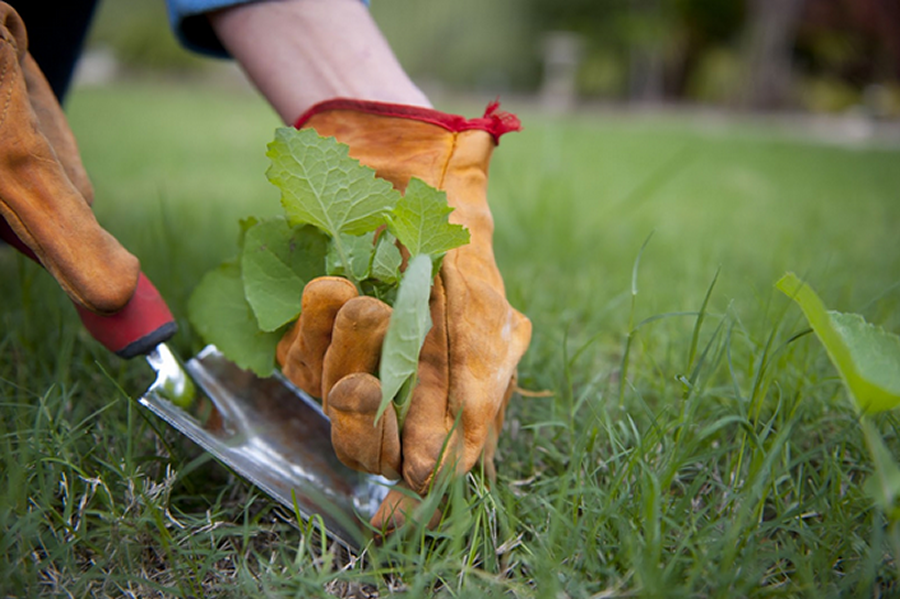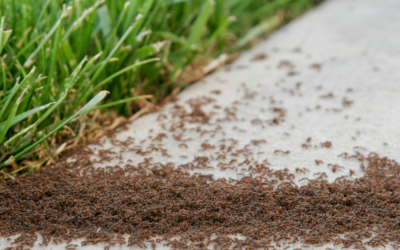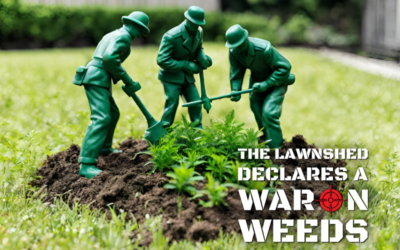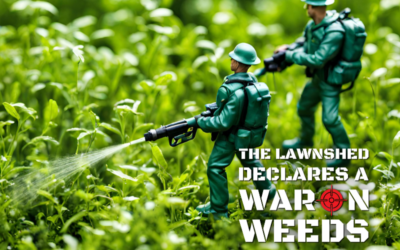We hate weeds… and we know you do too. Weeds can quickly spread and destroy your beautiful lawn that you have painstakingly cared for over months and months… honestly, weeds are the absolute pits! There are so many different types of weeds, and if you’re new to maintaining a lawn, you might not be familiar with the varieties that can affect the health of your turf. Ranging from mild to aggressive types, most weeds add zero nutritional value to your lawn and if they aren’t removed quickly at the root, will steal water and nutrients from your lawn, threatening the overall health of your lawn.
What Are Weeds?
Anything that is unwanted in your garden and naturally proliferates alongside other cultivated plants or crops is classified as a weed.
The main features of a weed include:
- They germinate quickly and have a whole lot of seeds.
- They have an extensive root system that spreads quickly.
- They can harm humans and animals and help transmit diseases to cultivated otherwise healthy plants.
- Some weeds can produce poisonous chemicals which can kill cultivated plants around them.
- Weeds can disrupt the healthy growth of crops or cultivated plants.
Why Are They Bad for Your Lawn?
Look, it’s a common fact that weeds are detrimental to the wellbeing and health of your lawn, but they can also be harmful to your children and pets. Inherently stronger than cultivated plants, they typically absorb more water, air, and nutrients.
A weakened lawn can lead to bigger risks of disease and insect infestations. Plus, many weeds are an eyesore and thrive quicker and faster than any cultivated plant.
In most cases, weeds can adapt to any environment and can rob your lawn of important nutrients. Roots that grow too fast can destroy your lawn and deprive it of sunlight and water, causing it to dry out. Plus, weeds can act as a habitat for garden pests like slugs and other insects, and they can encourage pests and diseases throughout the year, making it hard to grow healthy plants.
How to Get Rid of Them?
Weeds all have preferred conditions, bindiis thrive in hard compacted, dry lawns, whilst clover thrives in nutrient deficient lawns. Sedges on the other hand love moist, damp lawns.
Hand weeding
You can hand weed small lawns if the weeds haven’t spread too far and if you’re lucky to catch them before they germinate, it’s best to pull them out and remove all the root otherwise they can regenerate. If you’re looking for tools to assist, there are a range of specially designed apparatus available for removing the weeds from their roots. Once the weeds are out, make sure you give your lawn a good feed of fertiliser to help it grow into these bare areas.
Mowing your lawn
We can’t stress enough how important it is for your lawn mower to be in tip top shape. You may not know this, but your mower blades need to be sharp and set to the right height. If either of these steps aren’t met, you may find your lawn is more susceptible to disease and damage. A higher setting when you cut your lawn might actually the weed to retain its seed and allow the spread of weed seed across your entire lawn… and that’s no good! Alternatively too low a setting will remove too much grass, allowing the weeds to pop through what should be a dense canopy.
Using a weed killer
There are various weed killers on the market, but it’s important to use a selective herbicide that is designed to knock out the weeds without damaging your lawn.
- Herbicides: Herbicides should be used with caution .
- There are 2 types of strategies we can use for treatment of weeds
- Post emergent- The most common activity, actively growing weeds are targeted by postemergence herbicides.
- Pre-emergents- Used by professionals who require the best surface, these prevent weeds from forming (some for up to 6 months) so there’s no need to go out and kill weeds
A deeper look into the more commonly post-emergent herbicides will show that these also fall into 3 categories.
Broadleaf weed killers- The most common type of weed killers, these kill broad leaved weeds ( a term used for dicotyledons) like bindii, clover and burr medic.
Grass killers- These ones are great at selectively removing a grass weed from a grass lawn. These are typically very specific and expensive, some of these will overlap into the other 2 categories.
Sedge killers- A very specific herbicide as sedges are a totally different family of weeds.
We’re not surprised if this is all a little confusing, if you need assistance with choosing the right product for your lawn we highly recommend contacting our experienced team for more information. Even then, always read the label before using any herbicide product.
Helping You Maintain A Healthy Lawn
We understand how frustrating a weed infestation can be on your prized patch of green. These annoying pests can proliferate and destroy your lawn, and without the proper measures in place it’s nearly impossible to eliminate them.
You’ll need to be proactive in ensuring they don’t grow back, and this can become really easy with 2 preventative treatments per year.
We hate to say it but the safety of your lawn and surrounding plants is in your hands. If you want a professional opinion or for us to take a look at your active infestation visit us today. We have got your lawn maintenance needs covered and are with you every step of the way as you cultivate the lawn of your dreams.




